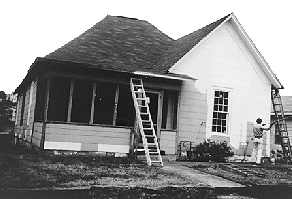Perhaps no group in society is more elusive, more difficult to help than the Nation's homeless. They are often loners who tenaciously avoid contact with others and often shun offers of assistance. They are often in dire need of food, shelter, health care, and other basic necessities. Research shows many are also mentally ill, usually with serious psychiatric disorders. Among these homeless people, who some estimate may number 600,000 or more nationwide, substance abuse is common.


NIDA-funded research projects are examining treatment options for homeless substance abusers. Patients in a Birmingham program are offered housing and taught skills such as carpentry and painting as long as they stay drug free.
Attempts to treat these homeless substance abusers with multiple problems have not proven effective due to difficulties in recruiting them for treatment. For those who do enter treatment, dropout rates are high. But two separate NIDA-funded treatment research projects, in New York City and Birmingham, Alabama, are testing innovative therapy approaches that are showing promising treatment outcomes. The programs counter patient recruitment and retention problems by coordinating efforts with existing homeless shelters and social service agencies. Both projects treat substance abuse in novel ways. They seek to move patients from highly structured and focused interventions to more flexible treatment regimens as these patients progress toward self-sufficiency by living with peers, paying rent, and working.
The New York City project, provides residential treatment tailored to meet the diverse needs of homeless substance abusers who are also mentally ill. The Birmingham project, includes "contingency management" in which patients who remain drug free gain access to housing and work therapy.
